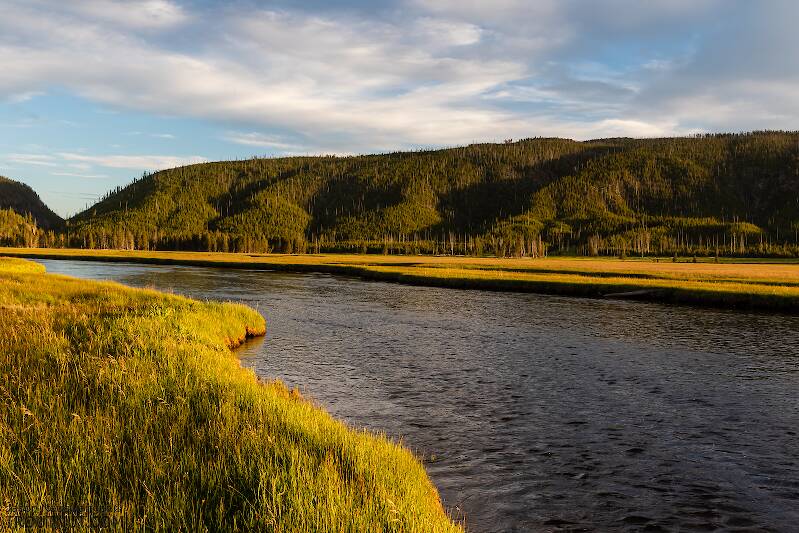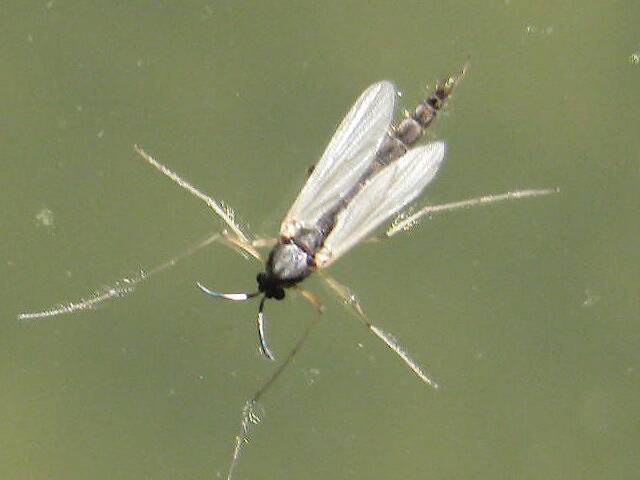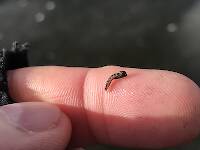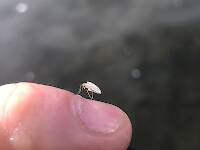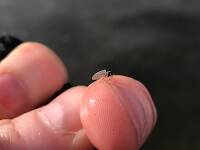
Blue-winged Olives
Baetis
Tiny Baetis mayflies are perhaps the most commonly encountered and imitated by anglers on all American trout streams due to their great abundance, widespread distribution, and trout-friendly emergence habits.
Featured on the forum

This is an interesting one. Following the keys in Merritt R.W., Cummins, K.W., and Berg, M.B. (2019) and Jacobus et al. (2014), it keys clearly to Ephemerella. Jacobus et al provide a key to species, but some of the characteristics are tricky to interpret without illustrations. If I didn't make any mistakes, this one keys to Ephemerella mucronata, which has not previously been reported any closer to here than Montana and Alberta. The main character seems to fit well: "Abdominal terga with prominent, paired, subparallel, spiculate ridges." Several illustrations or descriptions of this holarctic species from the US and Europe seem to match, including the body length, tarsal claws and denticles, labial palp, and gill shapes. These sources include including Richard Allen's original description of this species in North America under the now-defunct name E. moffatae in Allen RK (1977) and the figures in this description of the species in Italy.

Troutnut is a project started in 2003 by salmonid ecologist Jason "Troutnut" Neuswanger to help anglers and
fly tyers unabashedly embrace the entomological side of the sport. Learn more about Troutnut or
support the project for an enhanced experience here.

This dun molted most of the way into a spinner (though the wings got stuck) the evening after I photographed it, so I took some more photos of the spinner.
I found a female nearby, probably of the same species.
I found a female nearby, probably of the same species.
Martinlf on May 28, 2009May 28th, 2009, 3:55 am EDT
Tuesday was a very interesting day on a central PA limestone river. Cooler by about 20 degrees, it rained virtually all day off and on, mostly a light rain. By noon there were a variety of olives on the water. Some may have been Acerpenna--if they hatch this early in the season. They were tiny and had some yellow-orange in the bodies.
There were many others as well, all ranging from about a size 22 to a size 26, some with grey wings, some about a size 22 with black wings. The fish seemed to be keying on these latter bugs, which were more visible at least to me, and seemed to be more plentiful. Anyway, I caught fish on a parachute emerger with a black post. I'm wondering if the black winged olives might be Acentrella--the bug formerly known as Pseudocloen. Someone a few years back identified these bugs to me as Pseudocloen, but I'm not at all sure he was right.
The only black-winged olives I can find in Knopp and Cormier (yes, I know it's an imperfect reference--but it's the most detailed Mayfly book I own) are Baetis brunneicolor, which they list as both a western and eastern species, but only describe the western species as having black wings. They give Acentrella turbida the common name of "little slate-winged brown quill" but I think of slate wings as darker grey, not black.
Finally, I'd like some help on a very mean fish. He was eating olives--I'm not sure which ones, or at what stage of emergence--right in front of me. I threw several patterns at him, and had I not been shaking with the cold I might have tried a few more. (I finally left for the warmth of the car's heater and some more cooperative fish downstream.) The only thing that got a nod was a sunken soft hackle, but he refused that also after giving it brief consideration. What would you have thrown at him?
There were many others as well, all ranging from about a size 22 to a size 26, some with grey wings, some about a size 22 with black wings. The fish seemed to be keying on these latter bugs, which were more visible at least to me, and seemed to be more plentiful. Anyway, I caught fish on a parachute emerger with a black post. I'm wondering if the black winged olives might be Acentrella--the bug formerly known as Pseudocloen. Someone a few years back identified these bugs to me as Pseudocloen, but I'm not at all sure he was right.
The only black-winged olives I can find in Knopp and Cormier (yes, I know it's an imperfect reference--but it's the most detailed Mayfly book I own) are Baetis brunneicolor, which they list as both a western and eastern species, but only describe the western species as having black wings. They give Acentrella turbida the common name of "little slate-winged brown quill" but I think of slate wings as darker grey, not black.
Finally, I'd like some help on a very mean fish. He was eating olives--I'm not sure which ones, or at what stage of emergence--right in front of me. I threw several patterns at him, and had I not been shaking with the cold I might have tried a few more. (I finally left for the warmth of the car's heater and some more cooperative fish downstream.) The only thing that got a nod was a sunken soft hackle, but he refused that also after giving it brief consideration. What would you have thrown at him?
"He spread them a yard and a half. 'And every one that got away is this big.'"
--Fred Chappell
--Fred Chappell
GONZO on May 28, 2009May 28th, 2009, 6:53 am EDT
What would you have thrown at him?
A rock.
Martinlf on May 29, 2009May 29th, 2009, 12:56 am EDT
Good idea. I'll try that next time. If I can just time it with the moment he rises, perhaps I can bean him. ;>
"He spread them a yard and a half. 'And every one that got away is this big.'"
--Fred Chappell
--Fred Chappell
Falsifly on May 29, 2009May 29th, 2009, 6:42 am EDT
Louis, I’ve been having the same problem, with “Those Darn Olives”, here in Wisconsin. But here, they are much larger, and seem to concentrate in an area no larger than a martini glass. I don’t know if they are actually “Blue-Winged Olives” because their color more closely matches that of bleu cheese. I think it may be a Wisconsin thing. Anyway, I have developed an uncanny ability to predict this olive hatch, and can guarantee it to start at precisely 5 PM and last into the wee hours of the morning. Usually, after seeing so many olives, I can get a good night sleep, but I often awake at noon with a headache.
As far as that “very mean fish” is concerned, I think I can help. Had you continued to pursue, instead of succumbing to the cold, I feel confident you would have succeeded. I always carry a little something to keep me warm during those difficult fish, and suggest you start doing the same. This way, if you encounter an exceptionally mean fish that cannot be caught, you won’t give a “darn”.
As far as that “very mean fish” is concerned, I think I can help. Had you continued to pursue, instead of succumbing to the cold, I feel confident you would have succeeded. I always carry a little something to keep me warm during those difficult fish, and suggest you start doing the same. This way, if you encounter an exceptionally mean fish that cannot be caught, you won’t give a “darn”.
Falsifly
When asked what I just caught that monster on I showed him. He put on his magnifiers and said, "I can't believe they can see that."
When asked what I just caught that monster on I showed him. He put on his magnifiers and said, "I can't believe they can see that."
GONZO on May 29, 2009May 29th, 2009, 7:01 am EDT
Falsifly, doesn't your friend Jack get upset when you partake of the "olive hatch" without him?
Wiflyfisher on May 29, 2009May 29th, 2009, 10:00 am EDT
Finally, I'd like some help on a very mean fish.
So how do know that was a very mean fish? Were you partaking in Falsifly's olive hatch methods prior to witnessing that very "mean" fish?
John S.
https://WiFlyFisher.com
https://WiFlyFisher.com
Martinlf on May 29, 2009May 29th, 2009, 10:19 am EDT
Now I know exactly how to approach the olive hatch. With a rock and a flask.
By the way, a knowledgeable student of bugs has convinced me that the black winged rascals probably weren't olives at all, but Serratella deficiens, Little Black Quills.
By the way, a knowledgeable student of bugs has convinced me that the black winged rascals probably weren't olives at all, but Serratella deficiens, Little Black Quills.
"He spread them a yard and a half. 'And every one that got away is this big.'"
--Fred Chappell
--Fred Chappell
GONZO on May 29, 2009May 29th, 2009, 10:40 am EDT
Teloganopsis (in deference to Konchu's recent work)
Martinlf on May 29, 2009May 29th, 2009, 3:34 pm EDT
Teloganopsis deficiens, it is, then. Man, as soon as I learn a bug, I have to learn a new name. This entomology business is going to keep me on my toes for sure. I knew I'd never learn caddis, and now I'm wondering about mayflies.
John, as to the meanness of the fish, he wouldn't come and play, but kept giving me the fin every time I invited him. Now that's bad manners, at least, if not sheer malice.
Finally, for anyone else interested in the May-June olives, here's word on the little orangish olives I saw: "[The] yellow-orange-bodied baetids that you saw were probably Plauditis. Konchu mentioned them in response to one of your earlier baetid questions, and Acerpenna is usually a much later hatch."
John, as to the meanness of the fish, he wouldn't come and play, but kept giving me the fin every time I invited him. Now that's bad manners, at least, if not sheer malice.
Finally, for anyone else interested in the May-June olives, here's word on the little orangish olives I saw: "[The] yellow-orange-bodied baetids that you saw were probably Plauditis. Konchu mentioned them in response to one of your earlier baetid questions, and Acerpenna is usually a much later hatch."
"He spread them a yard and a half. 'And every one that got away is this big.'"
--Fred Chappell
--Fred Chappell
Shawnny3 on May 30, 2009May 30th, 2009, 1:30 am EDT
What would you have thrown at him?
The rock is a nice idea for your average fisherman, but Louis is not your average fisherman - he possesses flies larger, heavier, and less imitative than your average rock. My advice, Louis, is for you to tie on one of your DCDs or Sinking Inchworms as an "anchor" fly, then trail it by a few feet with the softhackle as a dropper. Then, stealthily approaching the fish until you are rod's length away, dap the softhackle just below the surface. When the fish rises to inspect it, drop the rod tip quickly and allow your "searching nymph" to bop him smartly on the head, being sure to have your net at the ready. All this presumes, of course, that your rod isn't immediately flexed past its breaking point by the dangling flies.
-Shawn
Jewelry-Quality Artistic Salmon Flies, by Shawn Davis
www.davisflydesigns.com
www.davisflydesigns.com
Martinlf on May 30, 2009May 30th, 2009, 1:45 am EDT
Thanks, Shawn, this is just the kind of information I was hoping to get when I asked "what would you have thrown at him?". I'm so lucky to have been provided with new techniques and uses for my standard flies.
All kidding aside, I remember fishing over a similar olive eater on the Delaware. A guy who was catching fish right and left came over to chat, and I convinced him to try the fish, which, after multiple attempts, he pronounced "uncatchable." I'm not sure I'd go that far, but it might take someone greater than most of us mere mortals to take some of these highly pressured fish.
All kidding aside, I remember fishing over a similar olive eater on the Delaware. A guy who was catching fish right and left came over to chat, and I convinced him to try the fish, which, after multiple attempts, he pronounced "uncatchable." I'm not sure I'd go that far, but it might take someone greater than most of us mere mortals to take some of these highly pressured fish.
"He spread them a yard and a half. 'And every one that got away is this big.'"
--Fred Chappell
--Fred Chappell
Quick Reply
Related Discussions
Topic
Replies
Last Reply
1
Apr 18, 2007
by Troutnut
by Troutnut
Re: First kayak fishing of the year - but again, the flowers outdid the fish 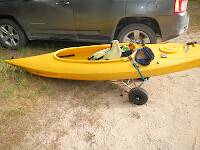
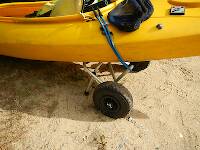


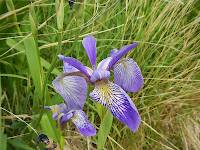
In the Photography Board by Jmd123
+ 6





In the Photography Board by Jmd123
3
Jun 22, 2018
by Jmd123
by Jmd123
Re: Identification of a possible Cordulegaster Dragonfly Nymph
In Cordulegaster Dragonfly Nymph by IanB
In Cordulegaster Dragonfly Nymph by IanB
6
Feb 10, 2017
by Taxon
by Taxon

